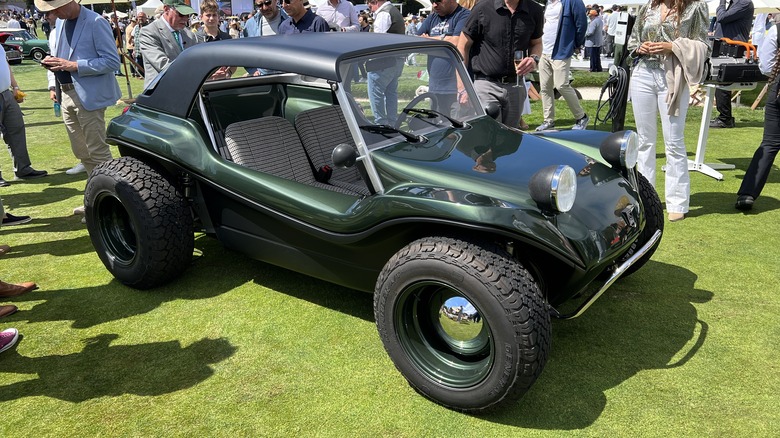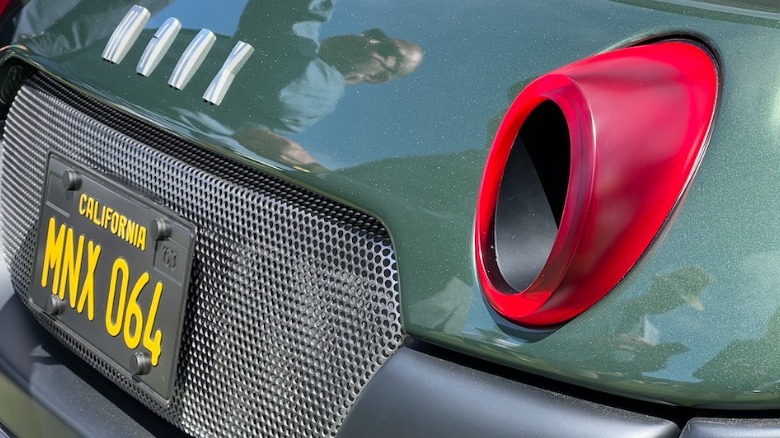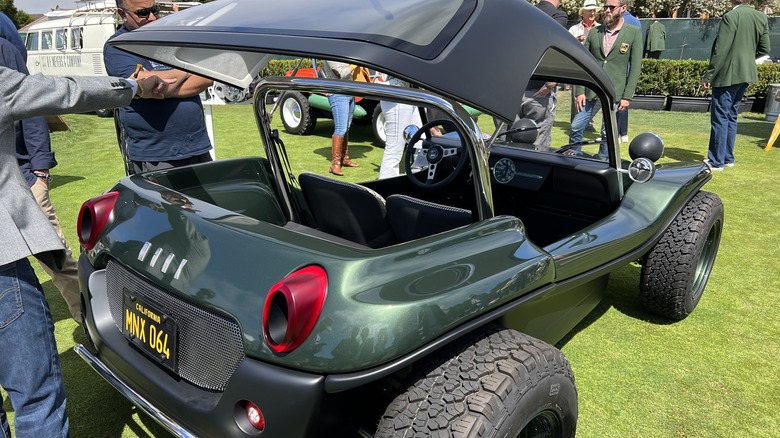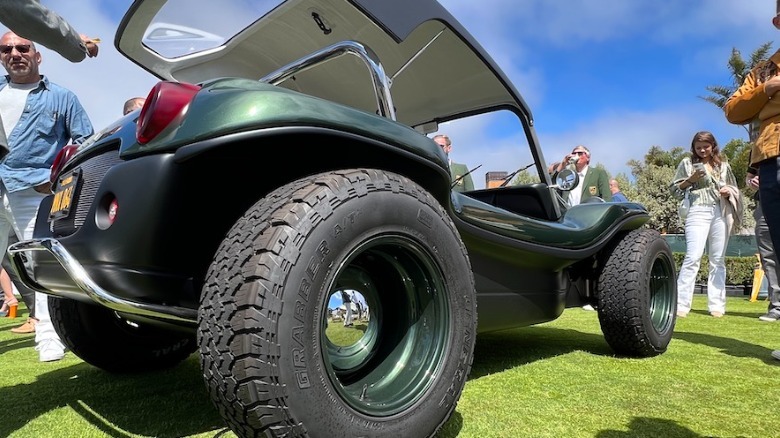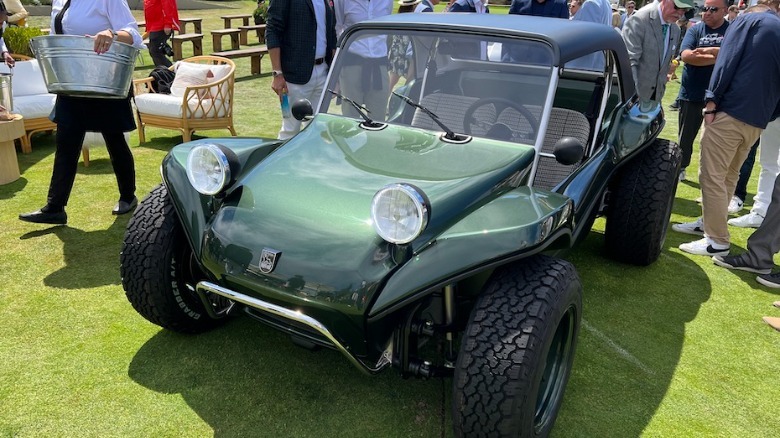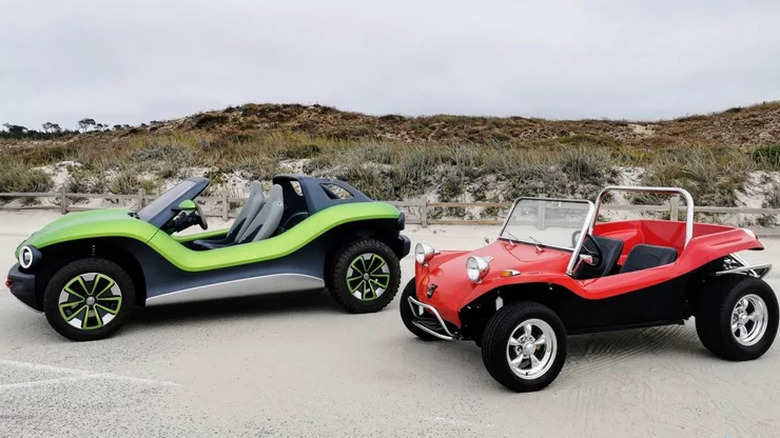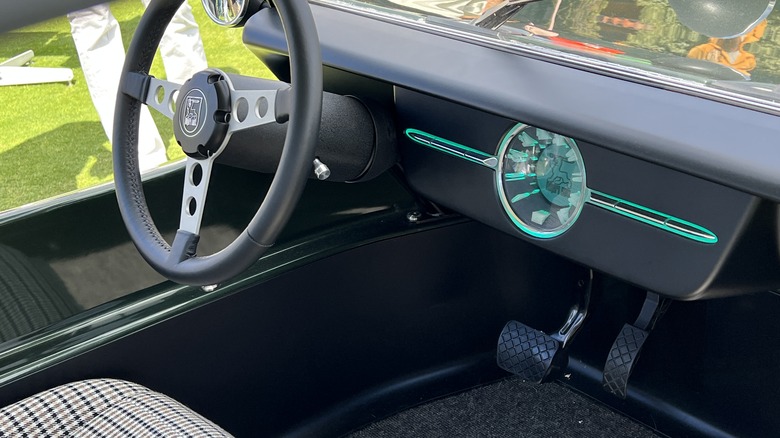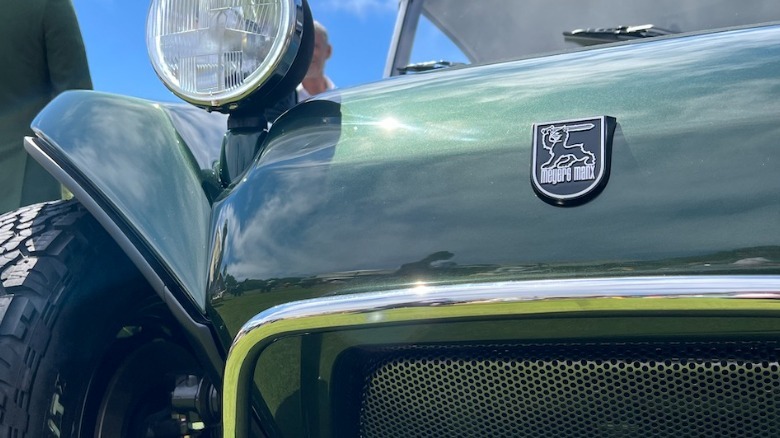This Lovable Electric Dune Buggy Needs Early Owners To Be Willing Guinea Pigs
Electric vehicles have done plenty to cast off their "earnestly green and dull" reputation, with super-fast acceleration, enough to embarrass all but the speediest gas-powered hypercar. Now it's time to throw some whimsy into the equation. That's what the reinvented Meyers Manx 2.0 EV dune buggy aims to do. It was previewed this month and made its big debut at The Quail as part of Monterey Car Week 2022, where we caught up with the team behind the unusual new EV.
At first glance, you'd be forgiven for not recognizing how much of a leap the Manx 2.0 is from its iconic predecessors. Developed by Bruce Meyers in the sixties, the original Manx saw humble Volkswagen Beetles converted into fun-first buggies with a series of car kits. Meyers Manx then relaunched in 2000, offering fully-built buggies, and the company was later acquired in late 2020 — a few months before Bruce Meyers' death.
While you can still buy classic Manx parts, the company's attention has now for the most part turned to the Manx 2.0 EV. Offered fully-built, the diminutive electric buggy was designed by Freeman Thomas — responsible for Volkswagen's New Beetle and the Audi TT — and blends retro and modern details with a custom rugged platform.
Low on weight, high on fun
An aluminum monocoque gets a pair of electric motors. Unlike most dual-motor EVs, though, the Manx 2.0 uses both on the rear: one per wheel, allowing for true torque vectoring (the Karma GS-6 does similar, in fact). There'll be two versions, one with a 20 kWh battery and another with a 40 kWh battery. The latter, Meyers Manx says, should muster up to 202 horsepower and 240 lb-ft of torque.
That'll be enough for a zero to 60 mph time of 4.5 seconds, while still delivering up to 300 miles of range. A very small curb weight helps with both, at even the larger battery Manx 2.0 apparently tipping the scales at 1,650 pounds. 60 kW DC fast charger support will be optional, as will a carbon fiber roof which pushes up and forward to make accessing the rear luggage compartment easier.
It's fair to say that practicality isn't high on the list of priorities here, mind. There are no windows and indeed no doors; the dashboard is eminently simplistic, with a round speed gauge framing a diminutive digital screen.
We've been electric buggy burned before
We've had our hearts broken over an electric dune buggy before, of course. Almost three years ago to the day, we found ourselves behind the wheel of the Volkswagen ID. Buggy Concept, a charmingly playful demonstration on VW's part of just what it could do with its flexible MEB electric platform.
Unveiled in early 2019, the ID. Buggy took the thoroughly modern architecture and wrapped it in a Meyers Manx-inspired open body. No roof, no doors, and very few creature-comforts, but it was hard to get hung up on that when the driving experience was so engaging. Volkswagen's pitch was that MEB's customization potential would allow it — or partners licensing the platform — to build low-volume, high-appeal EVs that would simply be too expensive to design, engineer, and have validated from scratch.
Sadly the hopes of a Manx reinvention died shortly after. Volkswagen's partnership fell through, and the German automaker turned its retro attentions on the ID. Buzz electric microbus instead.
The biggest question
Meyers Manx, in contrast, is determined to make Manx 2.0 production a reality. Having got up-close with the latest prototype at The Quail during Monterey Car Week 2022, we can definitely see the appeal. It's smaller and chunkier than photos suggest, the wheels looking outsized compared to the body, like a child's toy expanded to adult scale. We suspect, on public roads — where the automaker says you'll be able to legally use the Manx 2.0 courtesy of the Low Volume Vehicle Manufacturers Act — it'll turn more heads than a hypercar might.
The big question, one Meyers Manx is less eager to answer right now, is how much individuality might cost you. The company has started accepting $500 refundable deposits for the new EV, with the first 50 people agreeing to be beta testers set to take delivery of the very first examples sometime in 2023. "These partners will agree to drive their cars in all types of conditions for a pre-assigned minimum mileage over a 12-month period and discuss their findings on a regular basis with the Meyers Manx team," the automaker explained in a press release.
Those that don't fancy being a guinea pig can reserve for the full production version, deliveries of which are scheduled to begin in 2024. Again, there's a refundable deposit but no indication of how much more you'll need to pay after that. The original Meyers Manx was all about attainable entertainment, but we've a sneaking suspicion this new electric update could end up being more of a luxury plaything.
